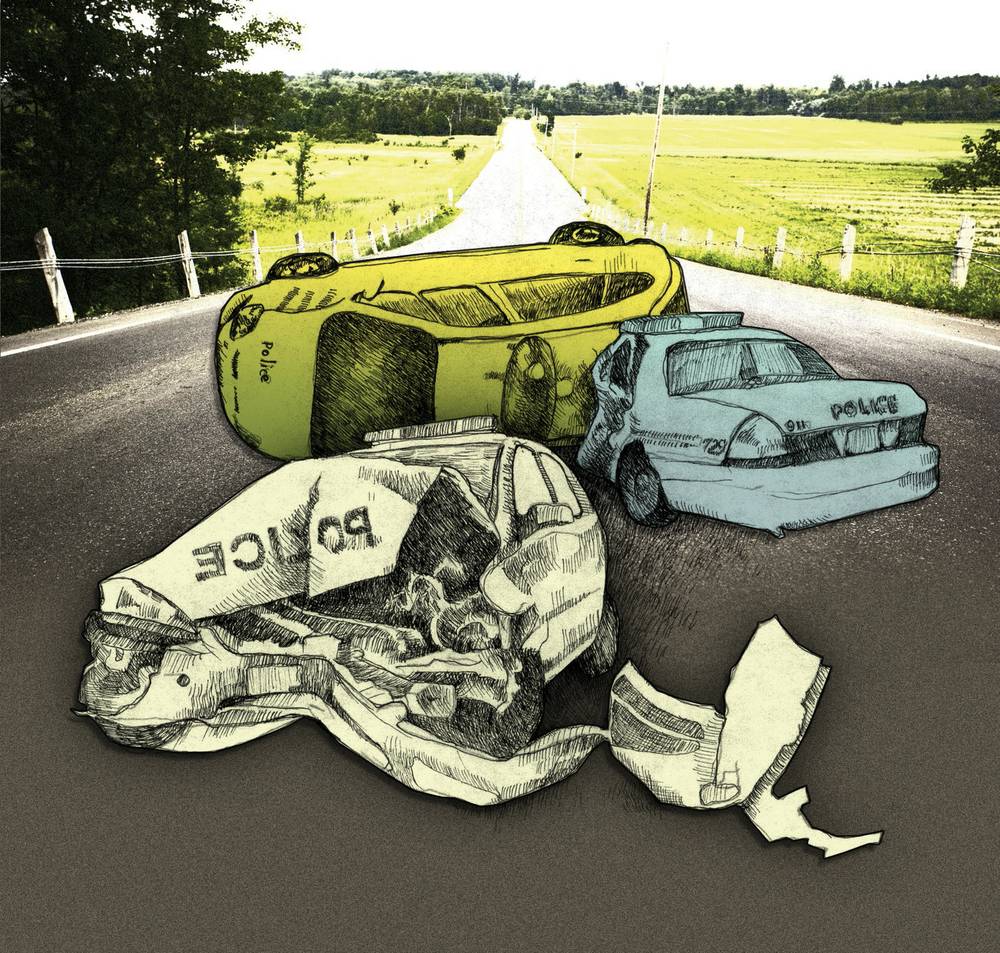May was a tough month for Metro cops behind the wheel. On May 7, Officer James Manor was killed when his squad car collided with a pick-up truck driven by Calvin Darling on West Flamingo and Ravenswood. Darling was thought to have been legally over the blood alcohol limit and failed to yield to an emergency vehicle. It turns out he was under the limit, and probably more to the point, Manor was driving at 109 mph.
That accident was followed by a slew of others: a collision at Jones and Ann on May 23; a four-vehicle wreck at Rainbow and Twain on May 25; and a crash at Flamingo and 215 on May 30.
The accidents have raised a host of questions about training standards and how the department is actually insured. Like many governmental agencies in Nevada, the department is self-insured and pays its own claims. In that capacity it is regulated by the state Division of Insurance. A handful of accidents, says PIO Bill Cassell, is not going to change the department’s actuarial balance.
Metro has a little more than 2,000 vehicles in its fleet; about half of them are black-and-whites. In fiscal year ’07-’08, the department logged 22.9 million miles and had 602 accidents, or one accident for every 38,000 miles driven. Of those, 46 percent were determined to be the fault of the officer, though many of these were minor dust-ups that didn’t involve other cars (like cops backing into poles or trash cans). Through the first three months of 2009, the department has logged 128 accidents over 6 million miles, or one accident for every 46,875 miles.
Metro officers are trained in driving when they’re in Metro’s police academy, and they also undergo biannual recertification. Cassell says the department is always reviewing its procedures for improvement, and will dedicate additional personnel and man hours to the drivers’ training.
The department has refused requests to interview its academy driving instructors. We spoke instead with the head of the Southern Desert Regional Police Academy, the academy that trains police in Henderson, North Las Vegas and other jurisdictions. Drivers there practice high-speed lane changes (60 mph), last-second decision-making and driving vehicles without ABS. They also practice maneuvers at lower speed.
But when is fast too fast? Interim Executive Director Terry Pippin says there is no upper limit trainees are encouraged not to exceed, but they are taught, rather vaguely, “not to drive above 70 percent of their potential.” This seems an admirable attempt at teaching restraint, but one imagines that in the middle of a tense situation it’s hard to quantify what 70 percent of potential means.
The state limits civil liability claims against government entities to $50,000, but one source, a retired law-enforcement officer who is active in investigations, says that Metro’s accident-review board can hand out stiff penalties to officers, including suspensions without pay.
“[You’ve] got the radio blaring, things going on,” says the retired cop. “There’s a lot to do in that car. Traffic in that town’s horrible. This is a vicious town to drive in. If you’re going to a call, and you’re going fast, your probability of crashing goes up.”








Previous Discussion: